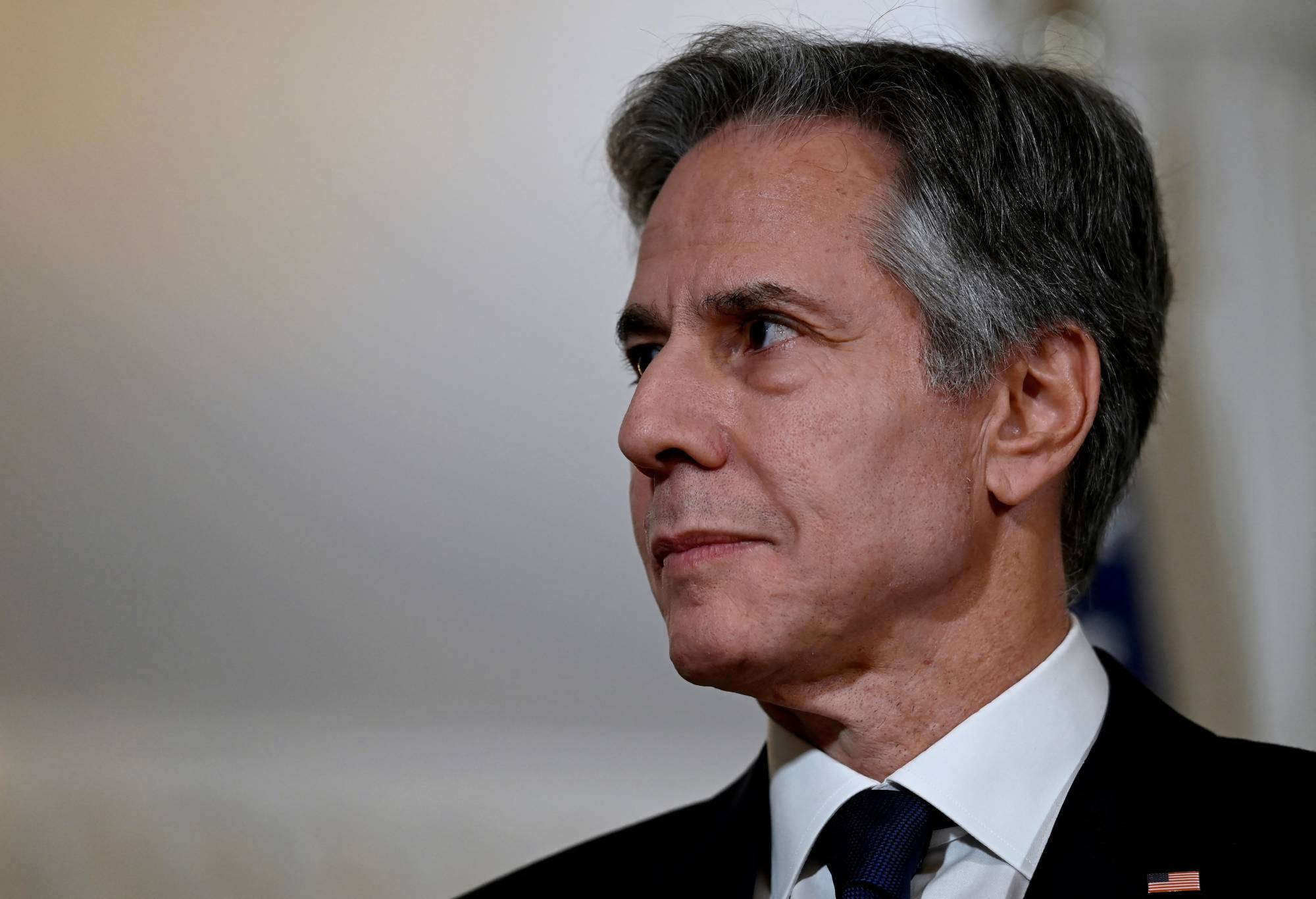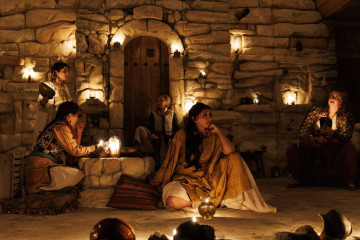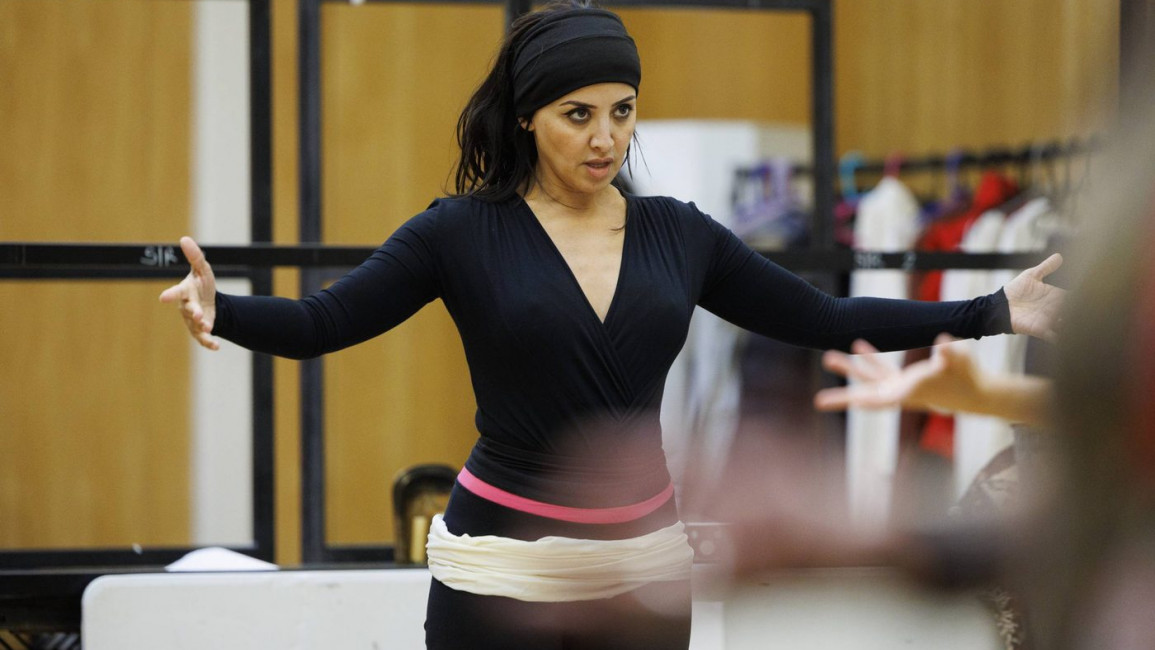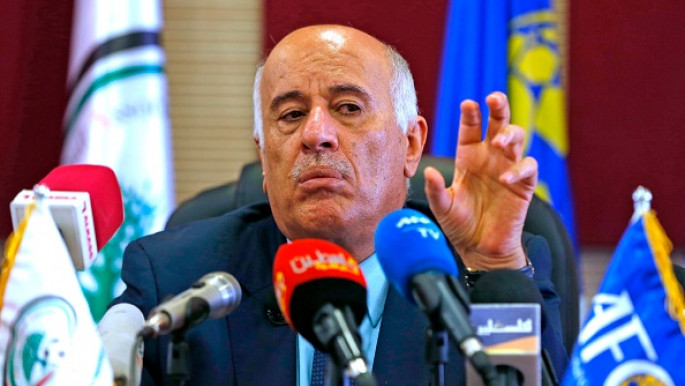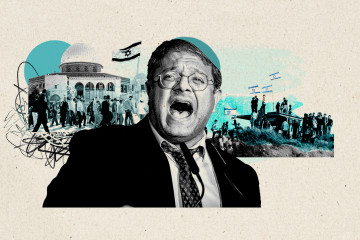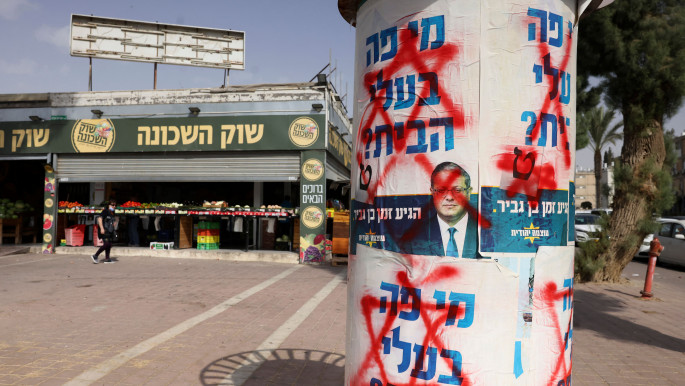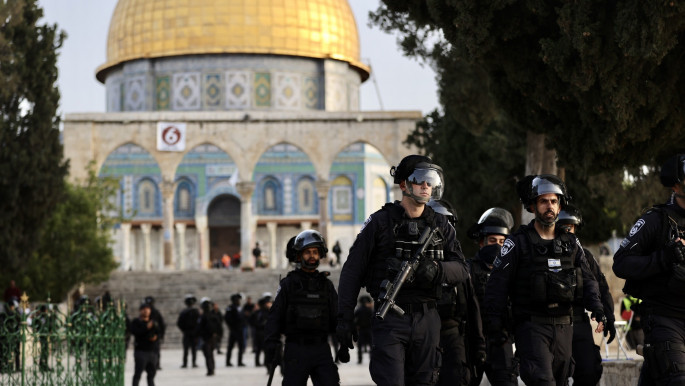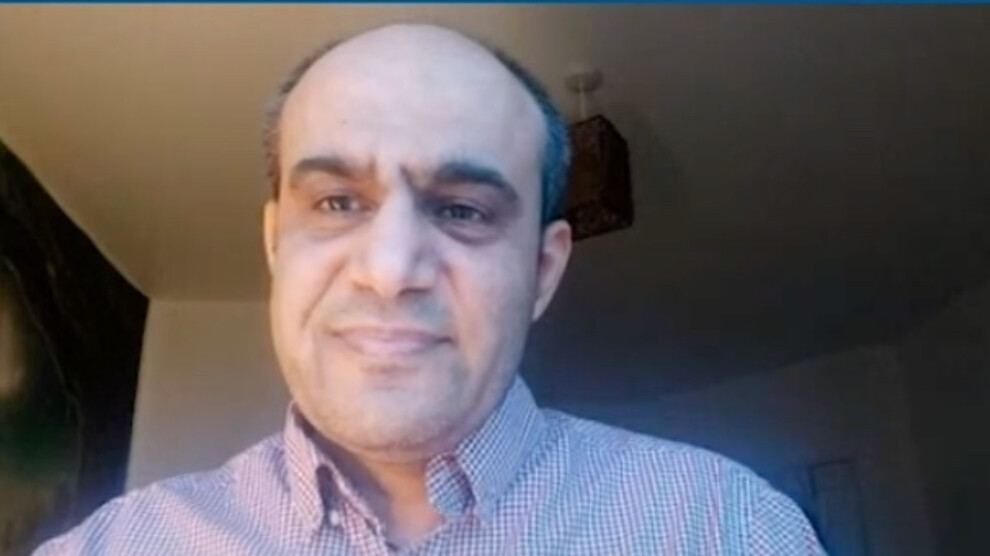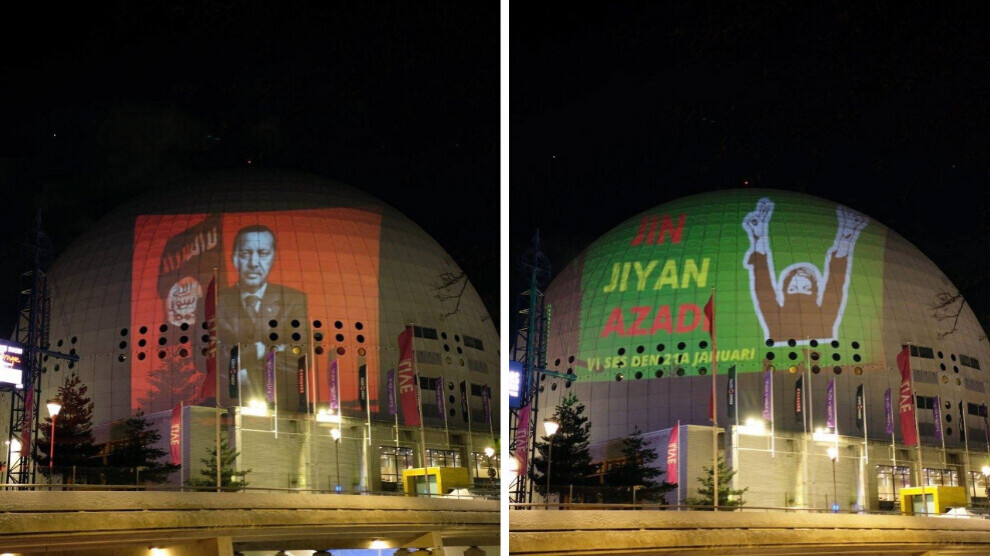By Ruth Sherlock,
Jawad Rizkallah
Published December 17, 2022
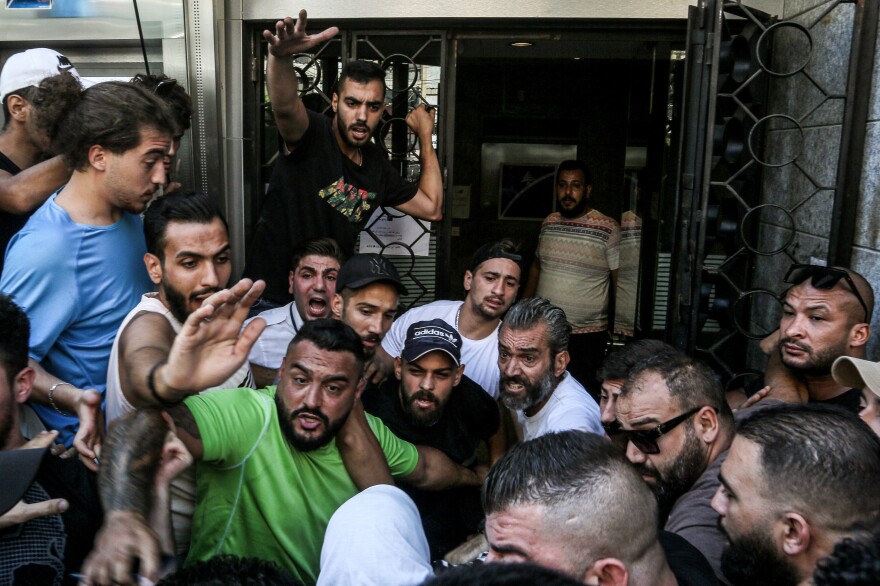
Marwan Naamani/Picture Alliance/Getty ImagesLebanese activists gather outside a local bank in support of Abed Soubra, who stormed the branch demanding access to his own accounts, in Beirut on Sept 16. Lebanese police detained Soubra after he entered the bank and, armed with a gun, demanded access to his deposits. It was the third such incident in Lebanon that week alone.
TRIPOLI, Lebanon — On a recent weekday in Lebanon's second-largest city, the atmosphere at a branch of the IBL Bank is tense. Security and police are gathered outside. Soldiers are clutching M16 rifles. People are crowding the entrance.
Inside, Zahra Khaled, a 53-year-old in a wheelchair who's in urgent need of medical care, is refusing to leave until she is given her savings. The bank has frozen all of it — tens of thousands of dollars. After selling personal possessions and exhausting all other options, she and her adult daughter have now entered the bank and will not budge.
Lebanon's banks froze most accounts three years ago amid an economic collapse. This year, faced with increasingly desperate circumstances, more people are resorting to extreme measures to access their savings. Khaled's protest is one of the milder tactics. Other Lebanese have taken to robbing banks for their own funds, brandishing real or toy guns. Most take only what they are owed, and so far no one has been reported killed in a robbery.

/ Marwan Naamani/Dpa (Photo By Marwan Naamani/Picture Alliance/Getty Images
/
Marwan Naamani/Dpa (Photo By Marwan Naamani/Picture Alliance/Getty ImagesA man speaks to negotiators from behind the iron bars of a local bank in Beirut, Lebanon, on Aug. 11, after he stormed the branch and held employees and customers as hostages. The man, who entered the bank carrying a machine gun and gasoline, demanded part of his deposited money, amounting to $209,000.
At the IBL Bank, Khaled has the backing of her own relatives and other depositors. "I'm here to support her to get her savings," says Mahmoud al Khattib, a retired soldier whose bank account is also frozen. "The stink of this corrupt system has affected us all."
The World Bank says Lebanon's leaders spent decades running the country's economy like a Ponzi scheme. According to its investigation, politicians and their financiers hollowed out public services to enrich themselves and those around them. When the economy collapsed in 2019, the report says, Lebanon's bank owners should have assumed the losses. Instead they froze depositors' accounts.
Since then, the country's politicians and heads of financial institutions have resisted implementing economic reforms — such as laws on money laundering — that would unlock funding from the International Monetary Fund. Critics say one of the reasons for this is because leaving the laws vague has allowed politically well-connected Lebanese to get their money out of the country.

/ Anwar Amro/AFP/Getty Images
/
Anwar Amro/AFP/Getty ImagesProtesters chant slogans as they gather outside the Justice Palace in Beirut on Sept. 19, demanding the release of two people involved in a bank heist the week before.
Meanwhile, more than 80% of the population lives in poverty, including Khaled's family.
Khaled negotiates with the staff at her bank branch for hours. But eventually the cashiers and managers leave, and police escort her and her family out, empty-handed.
"The bank brought the cops on us. We're only asking for our rights," her son Ismail Mohammed, 32, shouts, gripping the handles of his mother's wheelchair. "You've left us to starve."
"May God smite our leaders," his mother cries.

Ruth Sherlock / NPR
/
NPRZahra Khaled, 53, sits in a wheelchair in the apartment she shares with her sister in Tripoli, Lebanon, on Nov. 23. Khaled has lost a leg to diabetes and needs to pay for continued medical care, but is unable to access her savings.
Khaled lives with her sister in a large apartment with high ceilings and brightly colored traditional Lebanese floor tiles. But it's so empty now that their voices echo in the rooms. Khaled has sold her furniture, piece by piece, just to get by. A small coffee table in the living room is piled with cans and vegetables they'd emptied from the kitchen fridge before selling it too.
Ismail Mohammed shows NPR bank statements indicating the family has close to $90,000 in their account. Part of this is money is from a house he and his mother sold just before the banks froze depositors' accounts.
In the economic collapse, Mohammed lost his job. The Lebanese lira has lost almost 90% of its value since October 2019, and inflation has soared. Now, the family's debts are piling up.
"It's humiliating," Mohammed says. "We're even forced now to take produce from the grocer's on credit. I can't bring myself to look the greengrocer in the eye."
Khaled's daughter Amina Mohammed, 35, says she and her husband and their three children will be evicted by the end of December if they cannot pay their rent. She's also worried for her mother's health. Khaled has already lost her right leg to diabetes. Now she has pains in her left leg and doctors have told her she needs an MRI scan and possibly surgery — all things she cannot pay for.

Ruth Sherlock / NPR
/
NPRAmina Mohammed, 35, the daughter of Zahra Khaled, sits in her mother's apartment in Tripoli, Lebanon, on Nov. 23. Mohammed says she and her husband and three children will be evicted from her home if she cannot pay the rent.
"When your mother needs medicine and you have money you can't access — what do you do?" says Amina, shaking with rage. "What choice do you have?"
Several days after their visit to the bank, Zahra Khaled's family tells NPR that the bank has agreed to give them some of their savings so she can pay for medical care. Some banks do sometimes release funds for individual depositors on compassionate grounds. But overall, for now, there's no solution and most depositors question if they will ever see their money again.
Kamel Wazni of the Lebanese Control Commission, which supervises the country's banking sector, can't rule out that some of the depositors' money might be gone for good. Billions of Lebanon's dollar reserves have been taken out of the country, and billions more have been spent on subsidies and seeking to respond to the economic collapse.
Banks do allow withdrawals of $400 per account per month, plus some Lebanese currency, in a strategy that he says will repay as many as 70% of depositors.
But this does little to help those who need larger and more immediate sums. So depositors have started coordinating their actions, even forming a movement.
"A depositor gets into the bank; we are outside," says Ibrahim Abdallah, a spokesperson for a group called Cry of the Depositors, recalling a bank heist.
He says the crowd cheers the robber on: "We're like: 'Yeah! Do it. Come on!' We're giving them some motivation."

Ruth Sherlock / NPR
/
NPRIbrahim Abdallah, spokesperson for the Cry of the Depositors movement, stands at a protest outside a hotel hosting a conference for bankers in Beirut on Nov. 24. Abdallah says he has millions of dollars frozen in Lebanese banks. These days, he says, he can't even afford to take his son for dinner.
The group has lawyers — they too include depositors locked out of their savings — who sometimes offer legal advice to those staging heists on how to protect themselves from prosecution.
Abdallah says he knows these robberies to "liberate" deposits are not right.
"The normal process [if you've been wronged] is to go through the legal route." But in Lebanon, he says, the legal route is blocked by corrupt judges.
The country's leaders, he says, "are forcing the depositors to become criminals."
At a protest by Cry of the Depositors outside a hotel in downtown Beirut where bankers gathered for a conference, Abdallah points to a nearby glass-paneled skyscraper whose many apartments he helped sell through his work in real estate.
"I have millions in the bank. Millions," he says. "My son sometimes says, 'Let's go have dinner.' I can't afford to have a dinner."
Copyright 2022 NPR. To see more, visit https://www.npr.org

Ruth Sherlock
Ruth Sherlock is an International Correspondent with National Public Radio. She's based in Beirut and reports on Syria and other countries around the Middle East. She was previously the United States Editor for the Daily Telegraph, covering the 2016 US election. Before moving to the US in the spring of 2015, she was the Telegraph's Middle East correspondent.

